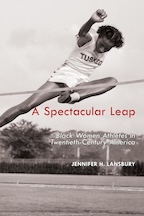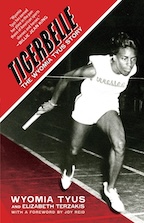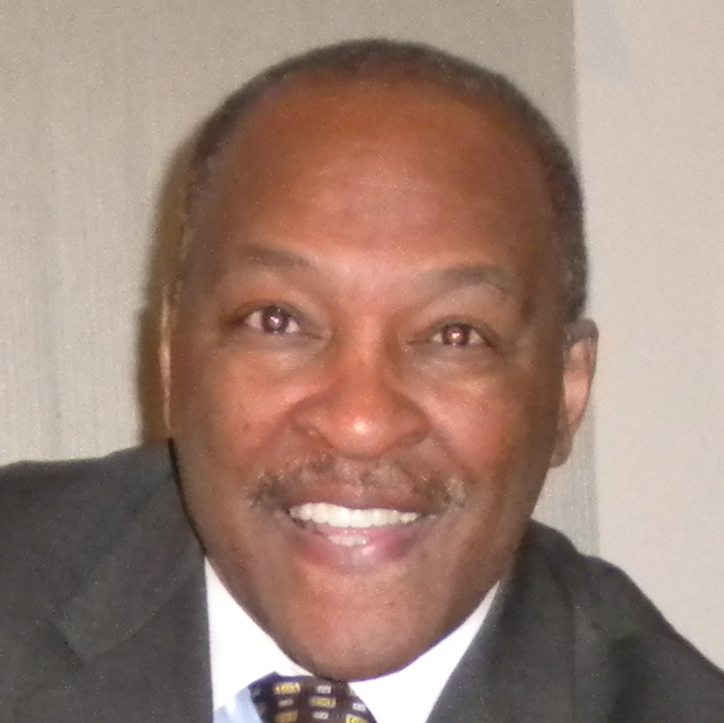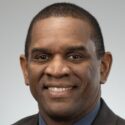 One of the most prestigious honors in all of sports is to be a member of an Olympic team, and to compete once every four years representing your country against the best athletic competition in the world.
One of the most prestigious honors in all of sports is to be a member of an Olympic team, and to compete once every four years representing your country against the best athletic competition in the world.
Track and field is the sport, more than any other, considered to be foundational in defining the Olympics games. Against all odds – in terms of athletic budgets, resources, and training facilities – HBCUs have produced more than 140 athletes who have competed in Olympics track and field events, representing the United States and close to a score of other countries in the Black diaspora.
Twenty-five HBCUs, roughly one in every four, have produced track and field Olympians. Among the more well known are Alice Coachman (Tuskegee), Wilma Rudolph, Ralph Boston, Wyomia Tyus, and Willye White (Tennessee State), Bob Hayes (Florida A&M), Jim Hines (Texas Southern), Edwin Moses (Morehouse), Lee Calhoun and Larry Black (North Carolina Central), Willie Davenport (Southern) and Tim Montgomery (Norfolk State).
Coaches such as Ed Temple and Nell Jackson (Tennessee State), Eddie Hurt (Morgan), Leroy T. Walker (North Carolina Central), Joseph Henderson (Alabama A&M) and George Williams (St. Augustine’s) are somewhat lesser known to the general public, though all were prolific in producing Olympic competitors for the USA and for other countries. Still they represent only the tip of the HBCU Olympic iceberg. Moreover, when isolated and considered without historical context, they often obscure and push to the margins the contributions of significant others – hidden figures – who were fundamental in the evolution of HBCU track and field, and in making it all possible.
Since the Olympic Games of 1948 in London, the record of HBCU athletes who have competed in the Olympic Games has been nothing short of remarkable, and those accomplishments may be more appreciated against the narrative of the evolution of Black participation in the Olympics. While the post World War II era introduced HBCU athletes to the Olympics, Blacks began competing in the modern Olympic games in 1904 in St. Louis, when sprinter George Poague, of the University of Wisconsin, won two bronze medals. Interestingly, in the aftermath of the Plessy v. Ferguson Supreme Court decision of 1896, which legalized segregation, several top Black athletes – urged by Black activists of the era – chose not to participate because Blacks attending the events would be restricted to racially segregated seating. In the 1908 Olympics in London, John Baxter Taylor of the University of Pennsylvania, became the first African American to win a gold medal as a member of the 1600-meter relay race. But it was at the 1924 Olympics in Paris where William DeHart Hubbard, of the University of Michigan, became the first African American to win a gold medal in an individual event, the long jump.
Those Black Olympic athletes were celebrated in the Black newspapers, and in the organs of Black advocacy organizations such as the NAACP’s Crisis and the Urban League’s Opportunity magazines. Black leaders and their communities came to understand the meaning and symbolism of sports and track and field in terms of demonstrating the potential of the race when given opportunities to compete on level playing fields – occasions uniformly denied in most of American society.
Cleve Abbott, coach and athletic director at what was then the Tuskegee Institute, understood the unique difference between track and field and the major collegiate and professional sports of football, baseball, and basketball. Bolstered by Jim Crow laws, it was widely contended that those team sports should remain racially segregated for two alternating reasons: to not promote or reflect social equality, and to further White supremacist dogma that Blacks were inherently inferior – physically, mentally and intellectually – and therefore incapable of being competitive with Whites.
However, Abbott reasoned that all evidence was to the contrary, and easily refutable in track and field where the best was not determined by any subjective measurement, but by the precision of the time clock and tape measure. Those unbiased instruments always rendered fair decisions, regardless of whether an athlete competed for an HBCU or a PWI. The clock and tape measure at segregated track meets complied with Plessy v. Ferguson, but the results of those measurements often contradicted and defied the White supremacy foundation on which it stood.
In 1927 Abbott established the Tuskegee Relays – an annual event held on the campus – and it became the HBCU and Black equivalent to the Penn and Drake Relays, though neither of those high profiled track events had HBCU exclusion or race restriction policies for competition. The best athletes of the Tuskegee Relays competed often in those events. Not only were all HBCUs invited to the Tuskegee Relays, high school and track club athletes were also included and encouraged to participate. Soon the Tuskegee Relays became the place for early identification of college and high school athletes who were worthy of HBCU work-study aid, a workaround for athletic scholarships, and advanced training for entry into major track meets. Black track athletes from as far south as Texas and as far north as Ohio came to determine how well they compared against others. Many of the best of the high school athletes were invited to the Tuskegee summer track camp.
Under Abbott, Tuskegee became one of the first HBCUs to invest in competitive sports for women, and the quality of the track and field athletes who competed at the Relays was good enough for the United States Olympic Committee to designate the 1936 meet an Olympic trial semifinal. The Relays became well known throughout Black America, causing many of the premier high school track and field athletes to prefer Tuskegee as their college of choice. Black weekly newspapers such as the Pittsburgh Courier, Chicago Defender, Norfolk Journal and Guide, Baltimore and Washington Afro American, Atlanta Journal, and New York Amsterdam News all dispatched sports writers to the event, and the smaller Black papers relied on the news service of the National Negro Press. This helped elevate the better Black track and field teams and performers into wider visibility in the Black community, and to confirm – through clock and tape measure – that the race could compete and win against White competition. It also encouraged high school and college coaches to develop the best of Black youth whose time and distance measurements warranted more training.
The 1932 Olympics in Los Angeles received more coverage from the Black press than any previous, largely because of the location, and especially the two Black sprinters Eddie Tolan, of Michigan, and Ralph Metcalfe of Marquette, who dueled in the 100-meter and 200-meter dashes. Tolan edged Metcalfe in both races – the 100 meter in a controversial photo finish – and set Olympic records in both events. Earlier that year he had set the world record in the 100-yard dash. As a result, he became the first non-Euro-American to receive the title of the “world’s fastest human.” Tolan’s success had a huge impact on Black athletes at PWIs and at HBCUs who could aspire to such fame and athletic accomplishment in track – and the barrier to those desires would be more the time clock and tape measure than Jim Crow and segregation policies.
Black interest in the 1936 Olympics in Berlin far surpassed the 1932 Olympics because of Jesse Owens, and the backdrop of Nazi Fuhrer Adolph Hitler and his doctrine of Aryan supremacy, the German companion to White supremacy. While none were from HBCUs, 18 Blacks made the Olympic team led by Jesse Owens who assumed the title of “worlds fastest human” winning four gold medals. Americans of all persuasions embraced Owens, making him the first Black superstar of the Olympics, but his unheralded and under-recognized Black teammates were also outstanding. Cornelius Johnson, of Ohio State, won the gold medal in the high jump and John Woodruff, of Pittsburgh, won the gold in the 800 meters. In total, Black Olympians won 14 medals – eight of them gold – which was a quarter of the 56 medals won by the entire U.S. team. “There was definitely a special feeling in winning the gold medal,” Woodruff said. “We destroyed his master-race theory, whenever we started winning those gold medals.”
Those Olympic performances when filtered through the context of race energized both the Tuskegee Relays and furthered HBCU interest in track and field – schools where over 98 percent of the collegiate Black athletes matriculated in the 1930s. In the wake of the Berlin Olympics, preparations began at Tuskegee, and at Tennessee State – where Abbotts daughter, Jessica, became the women’s track coach – and other HBCUs where the possibilities loomed large for the 1940 Olympics. The women’s track program at Tuskegee, which was started in 1937, almost overnight became the nation’s best, winning the championship of the integrated Amateur Athletic Union (AAU) national senior outdoor meet 14 times in 1937-1942 and 1944-1951. The team was first coached by Christine Petty who died unexpectedly at a young age in 1942. Abbott did not hire a replacement, taking over himself the coaching responsibilities for the remainder of those championship years.
 Ironically, as the Tuskegee women’s team flourished, other schools including HBCUs were scaling back competitive women’s athletics, though the reasons often differed. At the time, there was a widespread prevailing opinion that track and field was unfitting for women of any color because it was unfeminine, and a large number of middle-class women physical educators and college administrators of both races held that belief. Many Whites, however, saluted the space claimed by Black women in track and field but for racist reasons. “Since ‘decent’ White women did not participate in such a masculine competitive sport,” writes Jennifer H. Lansbury in her book, A Spectacular Leap: Black Women Athletics in Twentieth-Century America (University of Arkansas Press, 2014), the success of the Tuskegee women cushioned the stereotype that Black women – within and outside of slavery – were better equipped for hard labor and the rigors of sports and endeavors requiring physical strength. Tuskegee, however, pushed back strongly on the stereotypes, demanding and creating a culture where its female athletes embraced the concept of middle-class femininity which was adhered to by the school for all of its women students.
Ironically, as the Tuskegee women’s team flourished, other schools including HBCUs were scaling back competitive women’s athletics, though the reasons often differed. At the time, there was a widespread prevailing opinion that track and field was unfitting for women of any color because it was unfeminine, and a large number of middle-class women physical educators and college administrators of both races held that belief. Many Whites, however, saluted the space claimed by Black women in track and field but for racist reasons. “Since ‘decent’ White women did not participate in such a masculine competitive sport,” writes Jennifer H. Lansbury in her book, A Spectacular Leap: Black Women Athletics in Twentieth-Century America (University of Arkansas Press, 2014), the success of the Tuskegee women cushioned the stereotype that Black women – within and outside of slavery – were better equipped for hard labor and the rigors of sports and endeavors requiring physical strength. Tuskegee, however, pushed back strongly on the stereotypes, demanding and creating a culture where its female athletes embraced the concept of middle-class femininity which was adhered to by the school for all of its women students.
Two Tuskegee athletes set their sights on the next Olympics. Mozelle Ellerbee of Tuskegee was groomed for world-class competition, having no peers in HBCUs as a sprinter. He became the first Black male athlete to win the 100-yard dash in a National Track and Field Meet, when he won at the 1940 Penn Relays. Lula Hymes, considered the “Jesse Owens of of the fair sex” was a world-class sprinter and long jumper, and Abbotts daughter, Jessica, was among the nation’s best sprinters – enough to be considered a top Olympic prospect.
At Virginia State College, John Borican, achieved national acclaim in 1939 when he set a world record in a 1,000-yard match race with legendary miler Glenn Cunningham. He also set the world record in the 3/4 mile. Unfortunately, none of those promising athletes got a chance to compete when the Olympics was cancelled because of WWII. What would have been the 1944 Olympics were also cancelled and the top HBCU Olympic prospects of Tuskegee – Roweena Harrison who tied the world record in the 100-meter dash; Lucy Newell, who succeeded Hymes as the national long jump champion; and Alice Coachman, the nation’s best high jumper – were again denied the opportunity to compete on the world stage. There was another HBCU athlete, Lewis Smith, of Virginia Union and Prairie View, who would have been a lock for the 1948 Olympics. Lewis was the nation’s best 880-yard runner in the mid-1940s, having won his event at all the major track meets. But he decided to sign a professional football contract in 1947 – the year of the re-integration of professional football. The New York Times lamented the disappointment in Smith “eliminating himself as a candidate for next year’s Olympics track team on which he was the No. 1 choice for the 800-meter run.”
For track and field athletes there is a short period of time which defines the peak of their athletic abilities. Most can perform at their highest level for four years, a much smaller number can extend that period of time to 8 years, and exceedingly few can compete longer against world-class competition. Since the Olympics is held once every 4 years, it favors the younger athletes who are closer to their prime. Therefore any injury, mishap, strategic miscalculation or badly timed single day of a bad performance – for an Olympic hopeful – can be fatal to years of personal sacrifice and full-time intensive training.
Alice Coachman would have qualified for the high jump event had the Olympics been held in 1940 and 1944. Under the tutelage of Petty and Abbott at Tuskegee, she became one of the most versatile members of the track team. When she won the high jump at the 1948 London Olympics, she became the first African Americn woman to win an Olympic gold medal, and this occurred only minutes after Audrey Patterson of Tennessee State won a bronze medal in the 200 meters. Coachman was also the only American woman to win a gold medal. She won the praise of both Blacks and Whites during a time when competing in track and field was considered by many to be unsuitable for an American woman of any color. She was acknowledged as a national champion, even in the White South, and despite a segment of the Black community who thought the sport to be too masculine for women. Coachman became the first Black athlete to sign an advertising contract with Coca-Cola.
Abbott had been honored for work by being the first black named to the USA Olympic Committee. President Harry Truman invited the African American Olympians to the White House – which also included Nell Jackson, Mabel Walker and Theresa Manuel of Tuskegee and Emma Reed of Tennessee State. Uncertain of the optics and repercussions of inviting of Black Olympians to the White House, President Franklin D. Roosevelt had snubbed Jesse Owens 12 years earlier, refusing suggestions that he invite the celebrated Olympian to the White House. Truman’s invitation was both an indicator of his position on civil rights and an early indicator of the post-war changing climate and mood on civil rights and equality. George Rhoden, of Morgan State, competed in the 400 meters for Jamaica but did not place, though he became the first HBCU male to become an Olympian. HBCUs had made their first Olympian statement. It would not be the last.
Helsinki, Melbourne, and Rome
Rhoden returned to the Olympics in 1952 in Helsinki, Finland, and was more successful winning the gold medal in the 400 meters, and another gold medal in the 1600-meter relay, edging the USA’s all White team and setting a new world record. The USA won the gold medal in the women’s 4×100 meter relay and two members of that team were from HBCUs: Catherine Hardy of Fort Valley State College and Mae Faggs of Tennessee State. Barbara Jones, also a member of that relay team, was only 15 years old, and became the youngest woman to win an Olympic gold medal. Later she would enroll and become a member of the Tennessee State women’s track team.
Jim Gathers of Huston-Tillotson College won the bronze medal in the 200-meter run. He had finished third in the Olympic trials in the 100 meters, but the selectors “preferred” a White sprinter over him to compete in the Olympics, denying him a spot he deserved on the 4x100m relay team. Art Bragg, a sprinter from Morgan State, was a favorite in the 100 meters, but suffered a severe pulled muscle and was eliminated in the semifinals of the event. While not in track, another HBCU student from Howard, Norvel Lee, won a gold medal in the Olympic’s light-heavyweight boxing event, becoming the first Black to win a gold medal outside of track and field.
At the 1956 Olympics in Melboorne, Australia, Nell Jackson, women’s track coach of Tuskegee, was named head coach of the USA women’s Olympics team (track and field), making her the first Black to serve as head coach in that capacity. Again, national respect for the Tuskegee track program was affirmed. Mildred McDaniel of Tuskegee won the gold medal, breaking the world record in the high jump. Lee Calhoun, of North Carolina Central, won the 110-meter high hurdles, and Josh Culbreath, of Morgan State, won a bronze medal in the 400-meter hurdles. Willye White, of Tennessee State, took home the silver medal in the long jump, and later became the first woman to represent the U.S. in five Olympiads.
Wilma Rudolph, a 16-year-old high schooler, who attended summer track camps at Tennessee State, competed in the 200 meters, but did not medal in the event. However, she won a bronze medal in the 4×100 meter relay. That relay team was comprised of all HBCU Black women – Mae Faggs, Margaret Matthews, and Isabelle Daniels of Tennessee State – and Rudolph who would enroll there after her high school graduation. Matthews broke the long jump record in the Olympic trials, but failed to place in Melbourne.
Calhoun of NCCU emerged as the most celebrated of the Black Olympians, and achieved some commercial notoriety when he was married in 1958 on the popular television game show, Bride and Groom. He had no idea it would jepordize his amateur status and threaten his ability to participate in the 1960 Olympics. His fiance applied for participation on the show, based on a tip from his college track coach Leroy T. Walker, and was accepted, largely because Calhoun had become well known as a result of the 1956 televised Olympics. On the program couples would actually get married, be showered with wedding gifts, and be given something he and his bride could not have afforded: an all expenses paid honeymoon. None of this set well with the Amateur Athletics Union (AAU), the overarching governing body for track and field, and recognized by the International Olympic Committee (IOC). The AAU informed Calhoun that he was “unduly benefiting from his status as an athlete” and suspended him from competing in track and field for a year. It was the first such ruling and punishment of an Olympian since 1912 when Native American Jim Thorpe was stripped of his medals after it was revealed he had been compensated with expense money for playing baseball. It would be another generation before track and field athletes would be allowed to be financially compensated for their athletic prowess.
Calhoun returned to the Rome Olympics of 1960, where the track and field events received even wider television coverage than 1956, making household names – without financial benefits – of several Olympians. Again, he won the gold medal in the 110-meter high hurdles, making him the first ever to repeat in that event, and the first HBCU athlete to become a double Olympic gold medal winner in an individual event. Ralph Boston of Tennessee State won the long jump – breaking Jesse Owens’ Olympic record – and would win the silver and bronze respectively in the 1964 and 1968 Olympics. But it was the Tennessee State women who dominated the Olympics unlike any before or since, other than other Tigerbelles in subsequent Olympics. Wilma Rudolph won gold medals in the 100-meter and 200-meter races, and another in the 4×100 meter relay race – which was comprised of an all-Tigerbelle team of Rudolph, Martha Hudson, Lucinda Williams, and Barbara Jones – winning each event in world record times.
On the world stage, Coach Ed Temple, who followed coaches Jessica Abbott and Tom Harris at Tennessee State, had established a women’s track dynasty. Temple served as head coach of the U.S. Olympic women’s track and field team in 1960 and in 1964, and as assistant coach in 1980. In 44 years as track coach at Tennessee State, 40 of the women he coached competed in the Olympics, winning 23 medals.
Rudolph transcended sports becoming the poster child of the 1960 Olympics and a weapon in the Cold War with Russia, much as Owens had been a weapon in the war between democracy and Nazism. But it was television which conveyed her appealing innocent demeanor, striking physical beauty, textbook running stride, and feminine style, all merging to make her the darling of the mainstream media. She challenged stereotypes of women athletes, and multiple stereotypes of Black womanhood. But above it all, it was her compelling personal story which captured America. She had risen from poverty and had overcome childhood paralysis at the age of 8, and the diagnosis of physicians that she would never walk again, to become the world’s fastest woman.
Tokyo, Mexico City, Munich
The 1964 Olympics in Toyko unveiled Florida A&M’s Bob Hayes who established himself as the first HBCU athlete to become “the world’s fastest human'” equaling the world record in the 100 meters, and anchoring the winning and record setting 4×100 meter relay team, after being passed the baton by Dick Stebbins of Grambling, who, at Hayes request, ran third leg. Hayes was timed as running the fastest leg ever in that event. Hayes went on to become a star wide receiver for the Dallas Cowboys of the National Football League.
Theron Lewis, of Southern, was a member of the winning 4×400 meter relay team. Wyomia Tyus and Edith McQuire of Tennessee State won the gold and silver medals in the 100 meters, and McGuire the gold in the 200-meter dash. The 4×100 meter women’s relay won the silver medal with three members of the team from Tennessee State: Tyus, McGuire, and Willye White. Competing for Trinidad and Tobago, Ed Roberts of North Carolina Central won the bronze medal in the 200 meters, and teamed with Edwin Skinner of Maryland-Eastern Shore to finish second in the 4×100 meter relay.
 The Mexico City Olympics of 1968 occurred at the peak of the Black Power Movement, and will forever be remembered as the Olympics of Black protest with the iconic medal ceremonies demonstration of Tommie Smith and John Carlos, but the protest of Wyomia Tyus never received the respect and recognition it deserves. “I wore black shorts from day one rather than the white pair that was issued to us,” she says in her book, Tigerbelle: The Wyomia Tyus Story Edge of Sports, 2018). When the press asked her what she thought about the controversial Smith and Carlos protest, without hesitation she replied, “I’m dedicating my medals to them, I believe in what they did.”
The Mexico City Olympics of 1968 occurred at the peak of the Black Power Movement, and will forever be remembered as the Olympics of Black protest with the iconic medal ceremonies demonstration of Tommie Smith and John Carlos, but the protest of Wyomia Tyus never received the respect and recognition it deserves. “I wore black shorts from day one rather than the white pair that was issued to us,” she says in her book, Tigerbelle: The Wyomia Tyus Story Edge of Sports, 2018). When the press asked her what she thought about the controversial Smith and Carlos protest, without hesitation she replied, “I’m dedicating my medals to them, I believe in what they did.”
Tyus won gold in the 100 meters, making her the first athlete to win consecutive gold medals in that event, followed by her Tennessee State classmate Barbara Ferrell who won silver. In the 400-meter relay, she and Ferrell teamed with Mildred Netter of Alcorn State to win the gold. Madeline Manning, another Tigerbelle, won the gold in the 800-meter race, becoming the first HBCU Olympic gold medalist in a middle-distance event. She would go on to compete in four consecutive Olympics, serving as women’s captain in 1972, 1976, and 1980.
Jim Hines of Texas Southern won the men’s 100-meter, becoming the second HBCU athlete to claim the “world’s fastest human” title. Willie Davenport of Southern University won the 110-meter hurdles. Bob Beamon who had recently transferred from North Carolina A&T to University of Texas at El Paso won the gold medal in the long jump, breaking all previous records in that event, and Ralph Boston competing in his third Olympics won the silver medal. Beamon had been suspended from UTEP for refusing to compete against Brigham Young University, alleging it maintained racist policies, and Ralph Boston began to coach him unofficially.
Vinnie Matthews of Johnson C. Smith University was a member of the gold medal-winning 4×400-meter relay team. Norman Tate of North Carolina Central, Charlie Mays of Maryland Eastern Shore and Leon Coleman of Winston-Salem State University competed in the triple jump, long jump, and 110-meter hurdles respectively. Ed Roberts, of North Carolina Central, represented Trinidad and Tobago in the 200-meter dash and the 4×100-meter relay races.
Nell Jackson served her second term as women’s head coach of the 1972 Olympic Games in Munich, Germany. She had moved on from Tuskegee and had recently won the NCAA track title at University of Illinois. Stan Wright, of Texas Southern University, became a men’s assistant coach. Though later exonerated, he was blamed for confusing the time of the trial schedules, resulting in the two 100-meter favorites, Rey Robinson of Florida A&M and Eddie Hart of University of California, missing their quarter-final races.
Vinnie Matthews of Johnson C. Smith won the 400 meters, and Julius Sang of North Carolina Central won the bronze medal for Kenya. Matthews was expelled from the Olympics for his protest on the medals podium. He and Wayne Collette refused to stand at attention during the medal ceremony, standing sideways to the flag, with Matthews casually stroking his beard while the U.S. national anthem was being played. Collette stood barefoot, jacket open, with hands on hips. For their uncoordinated demonstration of protest, against what both felt to be the conditions of Blacks in America, they were banned from further Olympic competition by the International Olympic Committee, making both ineligible to compete later in the 4×400 meter relay. In 2022, a half-century later, the IOC lifted the ban.
Rod Milburn and Willie Davenport of Southern University won the gold and silver in the 110-meter hurdles. Larry Black of North Carolina Central and Robert Taylor of Texas Southern won gold medals in the 4×100 meter relay. Black won silver in the 200 meter dash, and Taylor won silver in the 100 meters. Robert Taylor of Texas Southern won silver in the 100 meters. Martha Watson and Willye White of Tennesseee State finished 1-2 in the long jump. Julius Sang and Robert Ouko, also of North Carolina Central, won gold medals for Kenya in the 4×400-meter relay race.
Montreal, Moscow Boycott, Los Angeles
One of the most important and historical achievements by an African American in the history of the Olympic games occured when Leroy T. Walker of North Carolina Central University was selected as the first Black head coach of the men’s Olympic team for the 1976 games in Montreal, Canada. It would prove to be one of the springboards for Walker being made the first Black to be selected as President the U.S. Olympic Committee in 1992 for the summer games staged in Atlanta. At the time of the appointment, Walker had coached seven Olympians from his school, and the Olympic teams from Ethiopia, Trinidad and Tobago, Israel, Jamaica, and Kenya. He had won international praise for his role in staging the USA-USSR Track Meet in Durham, North Carolina, in 1974.
By the 1976 games, with the wider integration of collegiate sports, HBCU track coaches were receiving more competition from PWIs in the recruiting of the best scholastic athletes. Southern schools – most of which had only recently began admitting Black students – were actively recruiting Black athletes in the revenue generating sports of football and basketball, and some were beginning to pursue track and field performers as well. It was the first Olympics since 1948 without an athlete from Tennessee State on the roster.
One of the most dominating performances was that of Edwin Moses of Morehouse College who won the 400 hurdles. Moses was unbeaten in that race from 1977 to 1987 – one of track’s best known winning streaks. Willie Davenport returned to his third Olympics winning the bronze medal in the 110-meter hurdles. Fred Newhouse of Prairie View won the silver in the 400 meters. Newhouse and Steve Riddick of Norfolk State won gold medals on the 4×400-meter and 4×100-meter relay teams respectively. Pamela Jiles of Dillard University and Debra Sapenter of Prairie View won silver medals in the women’s 4×400-meter relay. Coach Walker’s own athlete, Charles Foster, finished fourth in the 110-meter hurdles, just short of medaling.
The USA boycotted the Moscow, Russia, Olympics of 1980 because of the USSR’s invasion of Afghanistan. The disappointment was crushing for those whose years of sacrifices in training would not be rewarded with the opportunity to compete, especially those who were among the favorites to medal. President Jimmy Carter presented 450 of those athletes – a number from HBCUs – with the Gold Congressional Medal of Honor.
The USA returned for the 1984 games in Los Angeles where Edwin Moses, once again, won the 400-meter hurdles. In recognition of his world acclaimed stature in track, he was selected to recite the Olympic Oath at the Opening Ceremonies. Kim Turner of Alabama A&M won the women’s 100-meter hurdles. Chandra Chesseborough of Tennessee State won a silver medal in the 400 meters, and won gold medals in the 4×100-meter and 4×400-meter relays, becoming the first man or woman to win two relay golds in the same year – and less than an hour apart. Later in 1999, she returned to Tennessee State to be named head track coach of both men and women.
Seoul, Barcelona, Atlanta, Sydney, Beijing, Rio, Tokyo, and Paris
The 1988 games in Seoul marked the beginning of a downward trend in HBCU participation in Olympics track and field, especially for those athletes who represented the USA. The era of the Tigerbelles domination was over, and the larger integration of collegiate athletics which began in the late 1960s had taken a toll on HBCUs. Practically all of the premier Black scholastic athletes – male and female – were being actively recruited by PWIs whose resources and facilities were superior, and many of whom over time would hire Black track coaches. Also most of the legendary HBCU track coaches whose careers began during segregation had either transitioned, moved on to PWIs or were retired: Christine Petty, Cleve Abbott and Nell Jackson of Tuskegee, Jessica Abbott and Ed Temple of Tennessee State, Eddie Hurt of Morgan, Cliff Anderson of Maryland Eastern-Shore, Stan Wright of Texas Southern, Wilbur Ross of Winston-Salem, Leroy T. Walker of North Carolina Central and Dick Hill of Southern.
The 1988 games in Seoul, Korea, was one in which only two of the athletes representing the USA were from HBCUs: Dannette Young of Alabama A&M who won gold in the 4×100-meter women’s relay, and an older Edwin Moses who won bronze in what had been his signature event.
Barbara Jackets of Prairie View served as head coach of the women’s team for the Barcelona, Spain, Olympics of 1992, the second HBCU coach to serve in that capacity. Jearl Miles-Clark of Alabama A&M – who participated in four Olympics, and Rochelle Stevens of Morgan won the silver medal in the 4×400-meter relay.
Being named president of the USA Olympic Committee, Leroy T. Walker of NCCU, brought enormous pride to HBCUs and Blacks at the Atlanta games of 1996. Jearl Miles-Clark and Rochelle Stevens were teamed up again in winning the gold in the women’s 4×400-meter relay. Tim Montgomery of Norfolk State won silver in the men’s 4×100-meter relay. A protege of Walker, George Williams of St. Augustine’s University, served as assistant coach.
In the Sydney games of 2000, John Moon of Tennessee State was selected as assistant men’s coach. Brian Lewis and Tim Montgomery of Norfolk State teamed with Kenneth Brokenburr of St. Augustine’s to win the gold medal in the 4×400-meter relay. Jerome Young of St. Augustine’s was the heats runner of the 4x400m relay team which ultimately won gold. Jearl Miles-Clark again won gold in the women’s 4×100-meter relay, but her medal was later stripped due to steroid doping admissions of teammate Marion Jones of University of North Carolina. Antonio Pettigrew of St. Augustine’s won gold in the 4×400-meter relay, and was also later stripped of his medals after admitting using performance enhancing drugs.
The HBCU highlight for the 2004 Athens games was the appointment of George Williams, of St. Augustine’s University, as head coach for men’s track and field. Williams – against the odds of integration and with limited resources at a small liberal arts school – established his school as a national track power, while sculpturing a place for himself on the Mt. Rushmore of HBCU track coaches, easily making the list of all-time great track and field coaches. He coached over 40 Olympians at his school – representing the Bahamas, Barbados, Colombia, Canada, Antilles, Ghana, Puerto Rico, and Jamaica – and four of whom represented the USA. However, no male or female HBCU athletes medaled for the USA in those games, though several athletes from HBCUs competed and medaled for their native countries.
The HBCU numbers representing the USA continued to slide in the 2008 Beijing, China Olympics, where David Oliver of Howard, and Bershawn Jackson of St. Augustine’s won the bronze in the 110-meter and 400-meter hurdles respectively. In the 2012 London Olympics, Michael Tinsley of Jackson State won the silver medal in the 400-meter hurdles. Jeff Henderson of Stillman College was the sole HBCU medalist in the 2016 Rio Olympics, winning the gold in the long jump, and Darrell Woodson of Jackson State served as men’s assistant coach. Quanera Hayes of Livingstone College competed but did not medal in the 400 meters after winning the Olympic trials.
Randolph Ross and Trevor Stewart, of North Carolina A&T, won the gold in the Tokyo Olympics of 2021 as members of the 4×400-meter relay team, and their college teammates Daniel Stokes (Mexico) and Akeem Sirleaf (Liberia) competed in the 400-meter and 4×400-meter relays. Other HBCU athletes competed for their native countries such as Tovea Jenkins of Johnson C. Smith Univeersity (Jamaica) in the 400 meters, and Chidi Okezie of Hampton University (Nigeria) in the mixed 4×400-meter relay team.
Before leaving A&T in 2022 for the head coaching position at the University of Tennessee, Coach Duane Ross, like Coach Williams at St. Augustine’s, had established A&T as one of the nation’s top track programs in the exceedingly difficult era of collegiate sports integration, and in all probability would have produced more Olympians. His departure, coupled with the retirement of Williams were incalculable loses for HBCU track.
Moving towards the Paris, France Olympics, Caleb Snowden, high jumper from Arkansas- Pine Bluff, will compete for the USA, and Quanera Hayes of Livingstone College returns as an alternate in the 400 meters. Former Howard track sprinter Jessica Gbai will represent the Ivory Coast, and former Bethune-Cookman standouts Sade McCreath and Monae Nichols are each headed to Paris. McCreath will compete on Canada’s 4×100-meter relay team, and NIchols qualified for the USA in the long jump. These four athletes will continue the tradition of HBCU track and field Olympians – being prepared by Black coaches -competing on the world’s largest athletic stage, representing the USA and a host of other countries.
There are other HBCU trained athletes who will be competing in Paris, but for their native countries. And there will be continuing challenges as integration continues to diminish the quality of HBCU athletic competition, but the staggering and extraordinary Olympic track and field achievements since 1948 cannot be ignored, marginalized, or erased. They remain a reminder of how the time clock and tape measure helped to overcome race restrictions in sports; display the racial diversity in American sports on the world stage; assist America in appreciating the athletic competence of Black coaches and the skill sets of HBCU athletes; and, more importantly, in leveling the playing field of sports with irrefutable precision.
 Al-Tony Gilmore is Distinguished Historian Emeritus of the National Education Association. He has served as a history professor at Howard University, the University of Maryland and as a visiting scholar of history in the Estelle and Melvin Gelman Research Center at George Washington University. He has written widely on HBCUs, and is a noted and pioneering historian of the intersection of sports and society and is the author of the seminal book, Bad Nigger: The National Impact of Jack Johnson (Kennikat Press, 1975). His articles, commentaries and reviews have appeared in The New York Times, Washington Post, New Republic, Huffington Post, American Scholar and Commentary, among others, and in anthologies and leading scholarly journals. Dr. Gilmore posted a 9.6-second, 100-yard dash, was a long jumper, member of the sprint relay team, and co-captain of the North Carolina Central University track team, led by Dr. Leroy T. Walker, the first Black Olympic men’s head track coach, and the first Black president of the U.S. Olympic Committee. The Al-Tony Gilmore Endowed Scholarship, and a conference room on the NCCU campus has been named in his honor.
Al-Tony Gilmore is Distinguished Historian Emeritus of the National Education Association. He has served as a history professor at Howard University, the University of Maryland and as a visiting scholar of history in the Estelle and Melvin Gelman Research Center at George Washington University. He has written widely on HBCUs, and is a noted and pioneering historian of the intersection of sports and society and is the author of the seminal book, Bad Nigger: The National Impact of Jack Johnson (Kennikat Press, 1975). His articles, commentaries and reviews have appeared in The New York Times, Washington Post, New Republic, Huffington Post, American Scholar and Commentary, among others, and in anthologies and leading scholarly journals. Dr. Gilmore posted a 9.6-second, 100-yard dash, was a long jumper, member of the sprint relay team, and co-captain of the North Carolina Central University track team, led by Dr. Leroy T. Walker, the first Black Olympic men’s head track coach, and the first Black president of the U.S. Olympic Committee. The Al-Tony Gilmore Endowed Scholarship, and a conference room on the NCCU campus has been named in his honor.













Somehow in my revisions of an earlier draft of the manuscript of this article, an important HBCU Olympic name was omitted: Art Walker of Morehouse College. He competed in the Olympics of 1968 and 1972 as a triple jumper. My sincere apologies to Walker and the illustrious Morehouse community for this oversight. One of my goals in writing the article was to recognize all of the hidden HBCU figures who have contributed to the Olympics. In his prime he was considered the nation’s best triple jumper. I salute.
Al-Tony Gilmore
“… the watch and tape measure…” says it all, because they are incapable of lying. This is a lengthy, well researched article full of facts and figures that totally justify the time to read it. Just to imagine all of the time and effort these hidden figures put into training is unimaginable. Dr. Gilmore guides us through the entire entire narrative like a hot knife through butter . Kudos to him.
Fascinating Article! Thanks for sharing! Brought back some names I remember and had forgotten. Bob Beamon, Tim Montgomery, just to name a couple.
Once again, Dr. Gilmore has demonstrated his steadfastness in spotlighting significant details of history that mainstream coverage chooses to ignore. The contributions of HBCU’s in preparing in supporting athletes through trails of tears that led to the Olympics should be more that a footnote in tiny fonts. His remarkable research is thorough, objective and timely as we watch the scores of dark-skinned athletes take center stage in the games. Thank you, Dr. Gilmore, for not letting history forget.
Dr E.L. Lipscomb (8/6/2024)
Dr Gilmore continues to demonstrate an interest in and commitment to supporting the broad and comprehensive knowledge of his community and the communities of this democracy in general.
His efforts tend to inspire and invigorate thought processes in a wide range of subjects in general and historically in particular.
Dr Gilmore your efforts are greatly appreciated!
Why was Herb Douglas not included? https://en.wikipedia.org/wiki/Herb_Douglas
The great Olympian, Herb Douglas, did not attend a HBCU. He attended the University of Pittsburgh.